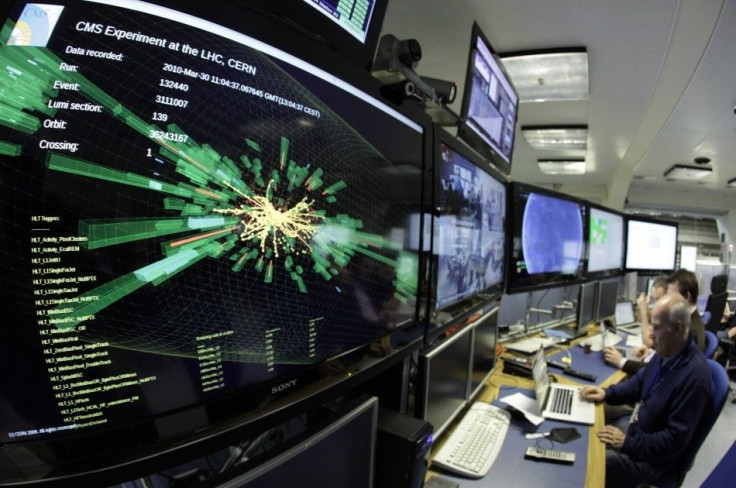With Cloud Supercomputing, Citizen Scientists Get Opportunity to Find Higgs Boson

Researchers at the European Organization for Nuclear Research (CERN) are closer than ever at proving the existence of the Higgs Boson and are turning to citizen scientists to finish the job.
The Higgs Boson aka the 'God Particle' has long been theorized by scientists as a piece of flying debris that turned into the stars and planets. It is named after British physicist Peter Higgs who in the 1960s first mentioned the particle was responsible for the Big Bang 13.7 billion years ago.
CERN has announced a new initiative that will allow citizen scientists with a computer to help scientists at the Large Hadron Collider (LHC). The project, called LHC@home 2.0, is the second version of a project that has been in place since 2004. The original LHC@home was established to help physicists simulate protons beam dynamics in the LHC.
The latest version simulates collisions between two beams of protons travelling at almost the speed of light in the LHC. Scientists working on the LHC compare these simulations based on their own models with the real data from four LHC experiments.
Where exactly will the scientists run these simulations? Well that's where the citizen scientists come in. Citizen scientists will form a virtual supercomputer in the cloud as part of the LHC@home 2.0 project. When the original LHC@home project launched, doing a full fledged simulation was beyond the scope of volunteer computing. Now it isn't and the involved scientists are licking their chops at the possibility.
"While LHC@home is a great opportunity to encourage more public involvement in science, the biggest benefits of citizen cyberscience are for researchers in developing regions who have limited resources for computing and manpower. Online volunteers can boost available research resources enormously at very low cost. This is a trend we are committed to promote through the Citizen Cyberscience Centre," said Sergio Bertolucci, Director of Research and Scientific Computing at CERN.
CERN says there are a lot of benefits to cloud supercomputers. For one, they provide a low cost technology for researchers in developing countries and can help solve their own issues. Already leading manufacturers such as HP and IBM have contributed to these kinds of projects.
One such project is the UNITAR Operational Satellite Applications Programme (UNOSAT). UNOSAT can produce maps for humanitarian applications such as damage assessment or monitoring deforestation.
"From a development and humanitarian perspective, the potential of citizen-powered research is enormous. Participating in the Citizen Cyberscience Centre enables us to get new insights into the cutting edge of crowdsourcing technologies. There is no doubt that volunteers are playing an increasingly central role in dealing with crisis response, thanks to the Internet," said Francesco Pisano, Manager of UNOSAT.
As far as the God's particle goes, scientists at CERN have come closer and closer to solving the mystery surrounding the theory. The researchers recently fired streams of protons through the Large Hadron Collider (LHC) particle accelerator and accumulated unusual results. The data spikes may represent the existence of the Higgs boson.
The scientists at CERN predict by the end of next year, they will have definitively figured out whether or not the God particle is a myth or not.
Follow Gabriel Perna on Twitter at @GabrielSPerna
© Copyright IBTimes 2025. All rights reserved.



















